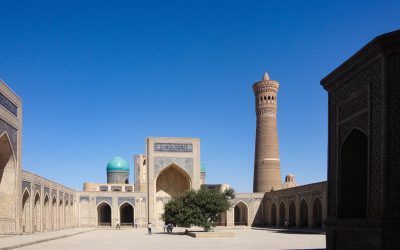MAGOKI-ATTORI MUSJID
The Magoki Attari Musjid is situated close to the center of the city, between the Taki Sarrafon and Taki Telpal Furushon trading domes on Mekhtar Anbar Street.
HERITAGE SITE | MAGOKI-ATTORI MUSJID
-
The Musjid is Central Asia’s oldest surviving Musjid and was built on the site of the pre-lslamic Moh temple of the Zoroastrians. Excavations have revealed that a six-pier musjid existed even during the 9th century, Samanid era which apparently was also domed. The Musjid was however substantially rebuilt in the 12th century as the previous structure was burnt to the ground in a city-wide fire in 937CE.
-
The first part of the name Magoki-Attori means ‘a Musjid in the pit’ and refers to the six-metre deep cultural layers of the Musjid where there are remains of a Buddhist monastery and a Zoroastrian temple. The second ‘Attori’ part of the name refers to the the medicinal herb sellers (Attors) who displayed their spices in the busy bazaar here.
-
The southern portal is part of the 12th century structure while the domed eastern one was added in 1547.
-
Sadly, the Musjid is today used as a Museum of Carpets and not for the daily prayers.








